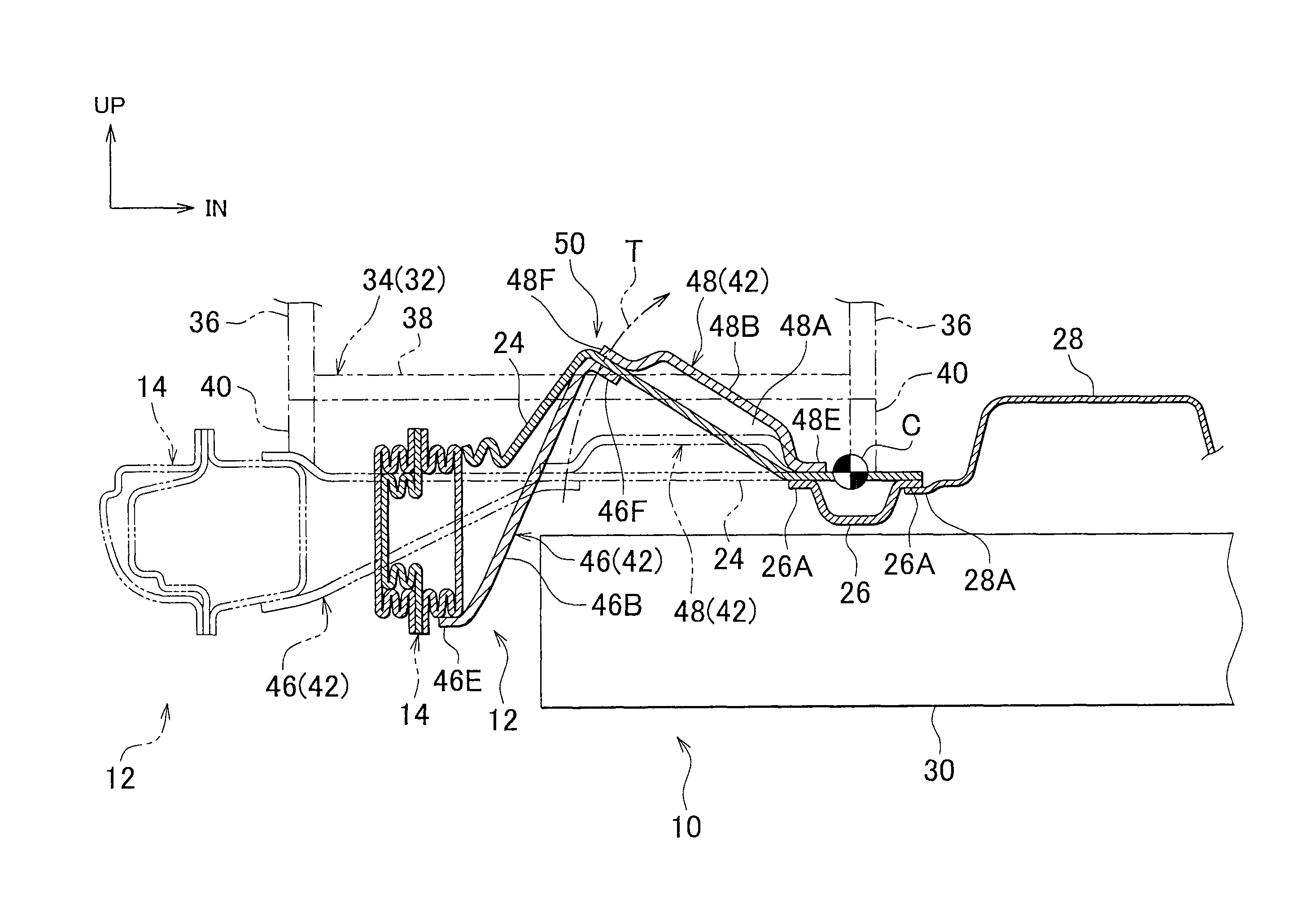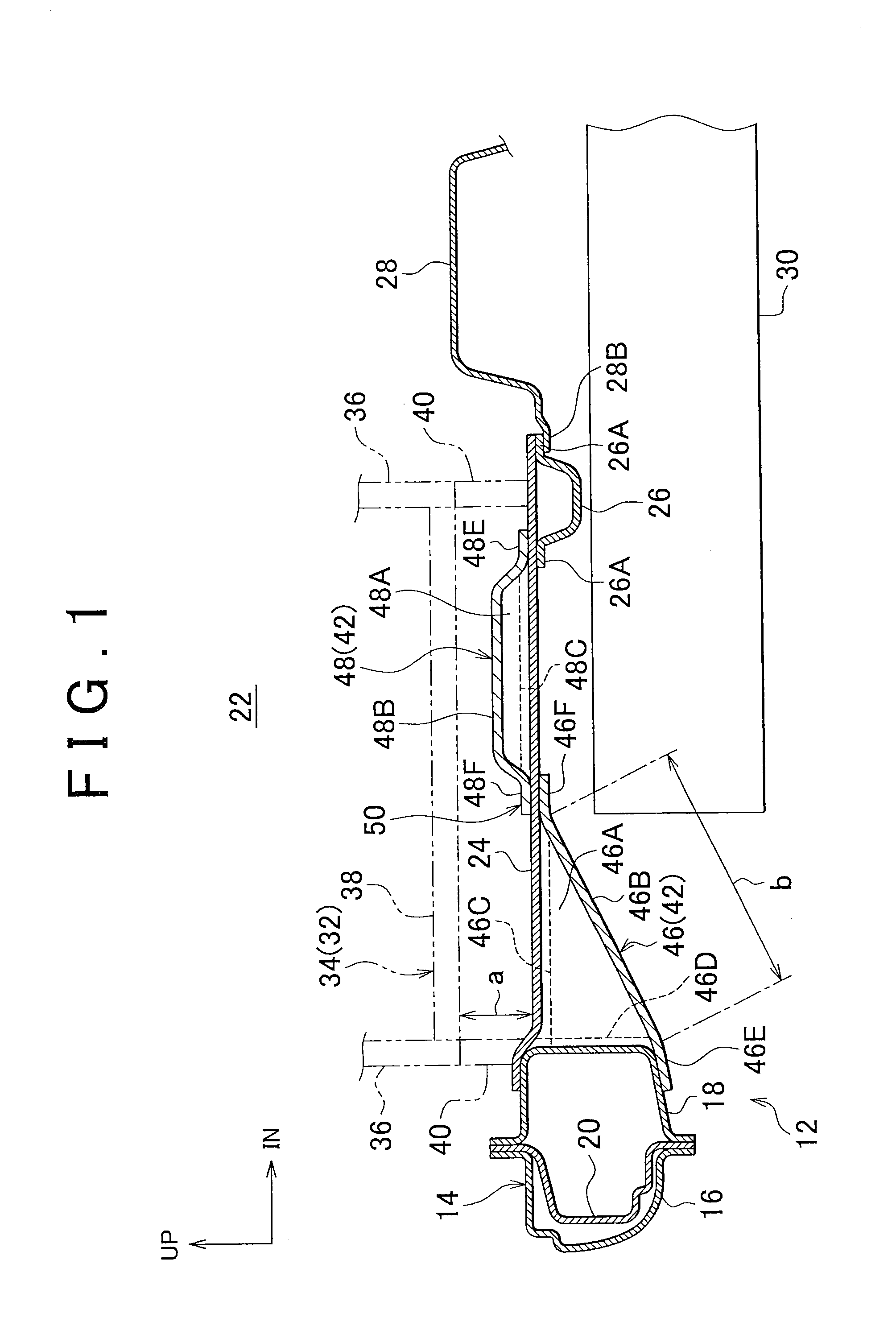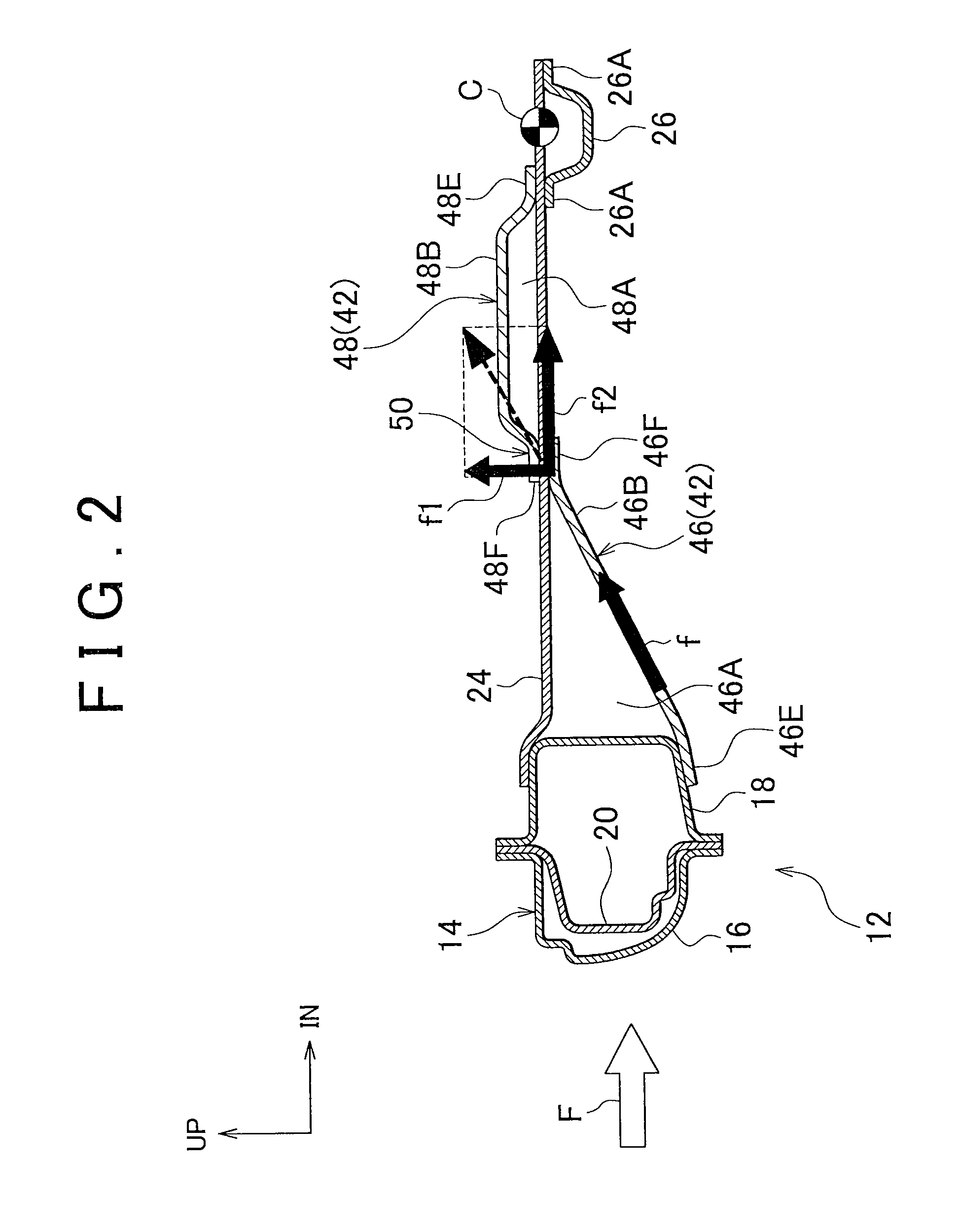Battery protection structure for automobile
a protection structure and battery technology, applied in the direction of roofs, vehicle sub-unit features, electric propulsion mounting, etc., can solve the problems of increasing the mass and cost of the body, and difficulty in keeping the amount of deformation (deformation stroke) of the body's side portion
- Summary
- Abstract
- Description
- Claims
- Application Information
AI Technical Summary
Benefits of technology
Problems solved by technology
Method used
Image
Examples
Embodiment Construction
[0024]A battery protection structure for an automobile according to an embodiment of the invention is described below with reference to FIGS. 1 to 4. In FIGS. 1 to 4, the arrow UP indicates the upper side of the vehicle, and the arrow IN indicates the inner side in the vehicle width direction.
[0025]FIG. 1 is a vertical sectional view of a battery protection structure 10 for an automobile according to this embodiment as viewed from the body's front side. This automobile is, for example, an automobile installed with a battery 30 such as an electric automobile, a gasoline hybrid vehicle, or a fuel cell hybrid vehicle. The battery protection structure 10 for an automobile according to this embodiment is applied to such an automobile.
[0026]As illustrated in FIG. 1, a rocker 14 is arranged in a body's side portion 12 of the automobile. The rocker 14 is a body frame member with a closed sectional structure that extends along the front-to-rear direction of the body. The rocker 14 includes a...
PUM
 Login to View More
Login to View More Abstract
Description
Claims
Application Information
 Login to View More
Login to View More - R&D
- Intellectual Property
- Life Sciences
- Materials
- Tech Scout
- Unparalleled Data Quality
- Higher Quality Content
- 60% Fewer Hallucinations
Browse by: Latest US Patents, China's latest patents, Technical Efficacy Thesaurus, Application Domain, Technology Topic, Popular Technical Reports.
© 2025 PatSnap. All rights reserved.Legal|Privacy policy|Modern Slavery Act Transparency Statement|Sitemap|About US| Contact US: help@patsnap.com



